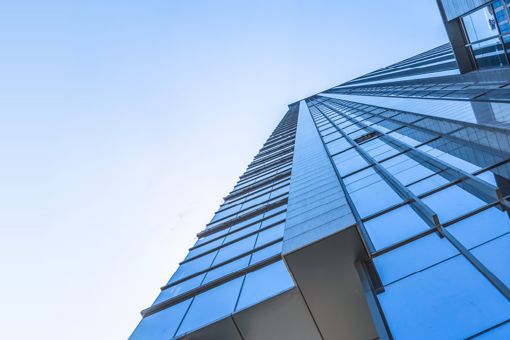The Council of Ministers has approved the Royal Decrees containing the lists of investments that qualify for or are excluded from the new regime of the investment deduction on 6 December 2024. The lists have been sent to the Council of State for legal vetting and are expected to be published in the coming weeks. The reform of the investment deduction can thus enter into force as from 1 January 2025.
The investment deduction allows taxpayers to deduct a percentage of the acquisition value of the investment (on top of the annual depreciation). While the old regime was outdated and complicated, the new regime is simpler and wants to support companies in the digital and sustainable transformation.
Under the new regime, the investment deduction consists of three tracks:
- a basic deduction of 10% for small companies[1],
- an increased thematic deduction of 30% (for large companies) or 40% (for small companies), and
- a technology deduction of 13,5% (one-off) or 20,5% (spread).
Only 1 deduction can be applied for an investment (no cumul).
Basic deduction of 10%
Under the previous regime, small companies and qualifying individuals could benefit from the ordinary investment deduction of 8%. The new basic deduction replaces the ordinary investment deduction and foresees in an increase to 10%.
For investments in qualifying digital assets an increased rate of 20% will apply. According to the explanatory notes to the legislation, this covers software and equipment to support digital payment and invoicing systems, digital accounting systems, digital CRM systems, digital e-commerce platform systems and digital systems for information and communication technology security. The nature and technical characteristics of the eligible investments will be determined by Royal Decree.
Besides the existing exclusions (such as cars or investments used by third parties via leasing or rent), the basic deduction will also not apply to fixed assets based on or using substances that are harmful to the environment and climate with the exception of assets for which no economically comparable carbon emission free alternative exists. A list of such assets will also be published. Examples are the distribution or storage of fossil fuels, the production of pesticides or of poisonous substances.
The basic deduction can be applied without a formal application procedure. The use of the forms 275U and 276U – as currently already applicable to the ordinary investment deduction – will however be retained.
Increased thematic deduction of 30% (or 40%)
Previously, there were also a number of specific investment deductions. They will all be replaced by "the increased thematic deduction". This deduction foresees in a deduction of 30% for large companies and 40% for small companies and individuals.
In order to be eligible for the investment deduction, the investment should belong to one of four "themes". For each of them a limitative list of qualifying investments will be published by Royal Decree. The respective lists are valid for three years, with a possible extension of two years. A maximum qualifying investment amount for specific investments can also be established by Royal Decree. It concerns the following:
- Investments in efficient energy use and renewable energy: e.g. energy-saving investments to buildings of at least 10 years old (such as isolation), adjustment of existing equipment, processes, systems and other installations of at least 5 years old for energy purposes (such as heat pumps, battery parks and wind mills) and the replacement of such installations of at least 10 years old.
- Investments in carbon emission free transportation: e.g. bicycles, speed pedelecs, trucks, ships and the related charging infrastructure.
- Environment-friendly investments: e.g. reduction of water use, recycling, decarbonization.
- Digital investments supporting the three previous categories: e.g. systems for the monitoring of energy use and production.
The increased thematic deduction in principle cannot be applied to fixed assets for which regional aid is requested (but exceptions may be provided).
An attestation from the competent authority must be added to the tax return in order to benefit from the investment deduction. The attestation must demonstrate that the specifications in the lists that will be established are met with respect to the specific investment. The competent authority responsible for the issuing of the attestation must also motivate this in the attestation, as well as confirm that the investment does not cause unreasonable harm to the environment (to be assessed according to the circumstances and possibilities of the specific investor). Further guidance on application and formalities will also be determined by Royal Decree.
Technology deduction
Since years, taxpayers have the option to benefit from the increased investment deduction for patents and environment-friendly investments in research and development (R&D) in the form of a deduction or a refundable tax credit. This requires obtaining a certificate from the regional competent authorities confirming the environmentally friendly nature of the investment.
Under the new regime, the investment deduction for patents and environment-friendly investments in R&D will be renamed as technology deduction. The qualifying investments under this deduction remain:
- Patents
- Fixed assets used to promote research and development of new products and advanced technologies that have no impact on the environment or aim to minimize the negative impact on the environment of existing products and technologies as much as possible.
The percentages for the technology deduction will be fixed at 13.5% for the one-off deduction and 20.5% for the spread deduction. There is also still the possibility to opt for a tax credit calculated at 25% of the amount of the investment deduction.
Should you have any questions, do not hesitate to contact your KPMG adviser.
Explore
Connect with us
- Find office locations kpmg.findOfficeLocations
- kpmg.emailUs
- Social media @ KPMG kpmg.socialMedia



